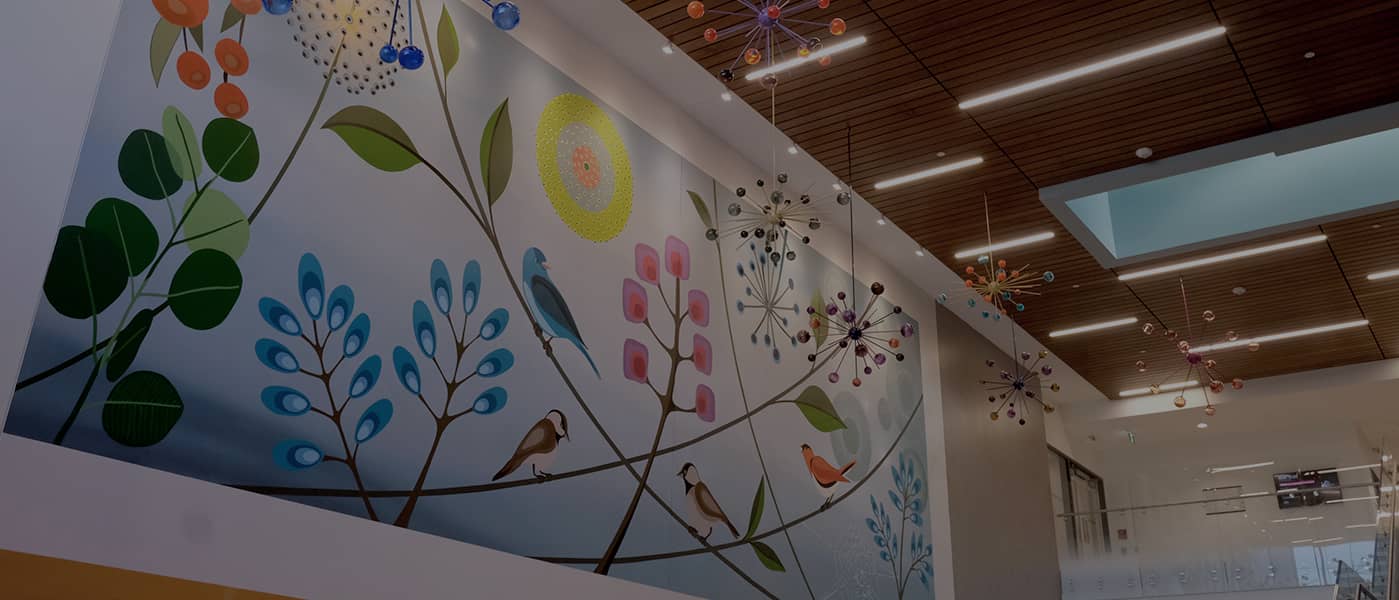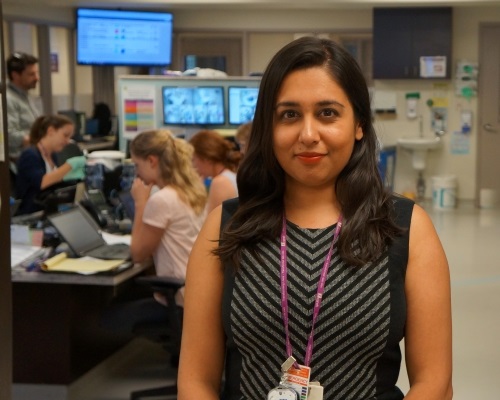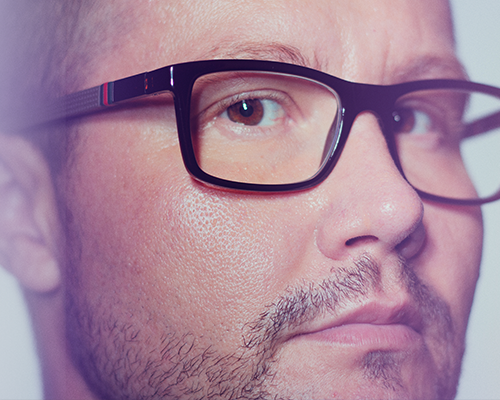


I’ve heard from so many of our supporters, especially those with lived experience, how much Not Today means to them. Thank you for sharing your stories with us.
When it comes to suicide, the stats are harrowing. Globally, one person dies by suicide every 40 seconds. Nearly 11 Canadians die by suicide per day. These are the stats, and it’s time we change them. As an organization, CAMH has an opportunity—and a responsibility—to talk about suicide in a way that hasn’t been done before.
Because of the support of people like you, we had the courage to launch our Not suicide. Not today. campaign and lead a much-needed conversation on suicide prevention. To us, Not Today is about giving people the one thing that suicide takes away: time. Time allows people living with mental illness the chance to get the help they need; time gives families more moments together; and time allows CAMH researchers and clinicians to find new treatment options and discoveries for those facing suicide.
Thank you for joining us in saying Not Today—because when we all say Not Today together, it becomes easier to say it when we’re alone.
From the smallest gestures to systemic change and everything in between, our actions have the power to transform lives. Your support gave survivors the strength to share their stories of resilience in the face of adversity—reminding people that no one has to die by suicide. Not Today.

Stigma almost took Karen Ross’ life. Now she wants everyone, no matter where they live, to get the mental health care they deserve.

Stacy-Ann Buchanan has experienced firsthand how stigma within the Black community can prevent people from seeking help.

Mark Farrant thought he knew how to handle trauma in his life. He was wrong.
My friend, with your help CAMH is changing the way the world understands and treats mental illness. Recovery is possible. Suicide is preventable. Here are just a few stories of our researchers who are making breakthroughs, finding new treatments, and inspiring hope through discovery.

The Hope app was created entirely in-house by CAMH staff from across the hospital, who pitched the idea at CAMH's Innovation Expo.



Hope is often found in unexpected places. At CAMH, you can find hope on your phone. Hope by CAMH is a free smartphone app that provides suicide prevention information, tools and crisis resources to support and guide individuals when they are experiencing thoughts of suicide.
For Tim Rankin, creating Hope was professionally and personally significant.
“My wife has suffered from depression and anxiety for many years,” he says. “One night she made a suicide attempt. Thankfully, she survived. Her psychiatrist advised that she create a safety plan to identify personal warning signs, coping strategies, and so on, that she could reference to help avoid a crisis or guide her through one. This was a bit of a relief for me, but the plan was on paper and I feared she might not have it with her when she needed it most.”
The initial team included Tim, Operations Manager with CAMH’s Information Management Group, who would manage and oversee the submission, Nicole Thomson, Senior Director of Quality Innovation, who would provide the quality, patient safety and academic perspective, and IT Specialist Gurpal Bubbra, who would build the app. They won the 2019 CAMH Innovation Award, which included a small amount of funding to support further development. As the app evolved over the past eighteen months through rigorous feedback and consultation, the team expanded to include more experts from across CAMH.
“Suicide prevention is a quality and patient safety priority at CAMH. It’s a required organizational practice across the hospital and it’s embedded in our clinical processes,” says Nicole Thomson.
The app is available on Android and iOS, giving people around the world access to this life-changing tool, and most of all, giving them hope.
CAMH researchers have found the suicide rate for people with schizophrenia spectrum disorders (SSD) to be over 20 times higher than the general population. The study of 20-years of population data, believed to be the largest of its kind, examined statistics on over 75,000 patients who received a first diagnosis of SSD. On average, each patient was followed for almost ten years and identified several risk factors that were predictors of suicide.
“What this study teaches us is that although people with SSD are at higher risk for suicide, we can target those at the highest risk with changes in policy and treatment,” said lead author Dr. Juveria Zaheer, Clinician Scientist at the CAMH Institute for Mental Health Policy Research.
The researchers suggest that treating psychosis must also include suicide prevention safety planning. They also recommend increasing the age limit for admission to first episode psychosis programs (most are closed to people over 30) and increasing the length of clinical follow-up care after a first episode of psychosis. “Now that we know what is happening, we need to better understand why,” says Dr. Zaheer. “Our next step will be to study the lived experience of people with SSD who have had suicidal ideation.”
Over the past 15 years, Dr. Alex Abramovich, has conducted research with hundreds of young LGBTQ2S+ individuals and the issue of suicide comes up in every single project.
“It’s not because a person identifies as LGBTQ2S+, that’s not why they’re experiencing suicidality, it’s often because of the high rates of stigma, discrimination and oppression. These are very young people who have been kicked out of their homes after sharing their identity, and who oftentimes are completely rejected and subjected to abuse and violence. They receive very little support and it’s understandable they would feel hopeless or experience mental health challenges," he says.
In a recent study Dr. Abramovich conducted on LGBTQ2S+ youth homelessness in York Region, he found 39 per cent of participants had attempted suicide in the past year. He also found 81 per cent thought they would be better off dead, and 64 per cent had thought about attempting suicide.
“As a transgender person, these issues are very dear to my heart. I’m very passionate about LGBTQ2S+ youth homelessness and transgender health. My goal is to prevent, reduce and find ways to ultimately end LGBTQ2S+ youth homelessness in Canada,” says Dr. Abramovich.
Hope is often found in unexpected places. At CAMH, you can find hope on your phone. Hope by CAMH is a free smartphone app that provides suicide prevention information, tools and crisis resources to support and guide individuals when they are experiencing thoughts of suicide.
For Tim Rankin, creating Hope was professionally and personally significant.
“My wife has suffered from depression and anxiety for many years,” he says. “…she made a suicide attempt. Thankfully, she survived. Her psychiatrist advised that she create a safety plan to identify personal warning signs, coping strategies, etc. that she could reference to help avoid a crisis or guide her through one. This was a bit of a relief for me, but the plan was on paper and I feared she might not have it with her when she needed it most.”
The initial team included, Tim, Operations Manager with CAMH’s Information Management Group, who would manage and oversee the submission, Nicole Thomson, Senior Director of Quality Innovation, who would provide the quality, patient safety and academic perspective, and IT Specialist Gurpal Bubbra, who would build the app. They won the 2019 CAMH Innovation Award, which included a small amount of funding to support further development. As the app evolved over the past eighteen months through rigourous feedback and consultation, the team expanded to include even more experts from across CAMH.
“Suicide prevention is a quality and patient safety priority at CAMH. It’s a required organizational practice across the hospital and it’s embedded in our clinical processes,” says Nicole Thomson.
The app is available on Android and iOS, giving people around the world access to this life-changing tool, and most of all, giving them hope.
CAMH researchers have found the suicide rate for people with schizophrenia spectrum disorders (SSD) to be over 20 times higher than the general population. The study of 20-years of population data, believed to be the largest of its kind, examined statistics on over 75,000 patients who received a first diagnosis of SSD. On average, each patient was followed for almost ten years and identified several risk factors that were predictors of suicide.
“What this study teaches us is that although people with SSD are at higher risk for suicide, we can target those at the highest risk with changes in policy and treatment,” said lead author, Dr. Juveria Zaheer, Clinician Scientist at the CAMH Institute for Mental Health Policy Research.
The researchers suggest that treating psychosis must also include suicide prevention safety planning. They also recommend increasing the age limit for admission to first episode psychosis programs (most are closed to people over 30) and increasing the length of clinical follow-up care after a first episode of psychosis.
“Now that we know what is happening, we need to better understand why,” says Dr. Zaheer. “Our next step will be to study the lived experience of people with SSD who have had suicidal ideation.”
Over the past 15 years, Dr. Alex Abramovich has conducted research with hundreds of young LGBTQ2S+ individuals and the issue of suicide comes up in every single project.
“It’s not because a person identifies as LGBTQ2S+, that’s not why they’re experiencing suicidality, it’s often because of the high rates of stigma, discrimination and oppression,” says Dr. Abramovich. “These are very young people who have been kicked out of their homes after sharing their identity, and who oftentimes are completely rejected and subjected to abuse and violence. They receive very little support and it’s understandable they would feel hopeless or experience mental health challenges.”
In a recent study Dr. Abramovich conducted on LGBTQ2S+ youth homelessness in York Region, he found 39 per cent of participants had attempted suicide in the past year. He also found 81 per cent thought they would be better off dead, and 64 per cent had thought about attempting suicide.
“As a transgender person, these issues are very dear to my heart. I’m very passionate about LGBTQ2S+ youth homelessness and transgender health. My goal is to prevent, reduce and find ways to ultimately end LGBTQ2S+ youth homelessness in Canada,” he says.

Our Queen West community held a parade to celebrate our CAMH staff working on the frontlines of the pandemic — what a special day!
I’m so inspired by how the CAMH community has found ways to lift each other up during the COVID-19 pandemic. I am grateful for our staff who have gone above and beyond the call of duty to keep our patients and community safe. I am grateful for people like you who are staying connected with us and supporting our efforts to help the people we serve take care of their mental health.
Take a look at some of the ways in which CAMH has come together in recent months to give people help and hope during these challenging times.

There have been over 500,000 unique visits—and counting—to CAMH’s COVID-19 Mental Health Resource Hub.

At the onset of the COVID-19 pandemic, research showed that mental health was rapidly declining, as people felt the effects of isolation and physical distancing. CAMH had one message for Canadians: Even though we may be apart, we are not alone.

CAMH quickly mobilized to develop evidence-based resources, tips and strategies to help Canadians manage their mental health during the pandemic, available on the COVID-19 Resource Hub.

From March to April alone, CAMH’s virtual care visits from approximately 350 per month to almost 3,000—an increase of over 750 per cent.

Thanks to the support of people like you, the Gifts of Light program at CAMH has continued to bring strength, courage and hope to CAMH patients during the pandemic. A generous donation from Donna and Gary Slaight allowed CAMH to purchase more than 500 tablets for patients and staff across the hospital. Patients use the tablets to stay connected with their loved ones and care team, while staff use them to facilitate virtual care sessions. The tablets also allow for patients to participate in virtual programming, like online yoga classes.
people reached by our Apart. Not alone. campaign, reminding them that we will get through this pandemic together
unique visits to the COVID-19 Mental Health Resource Hub and counting
virtual care visits each month since November 2020, made possible by accelerating training of frontline staff
You may have noticed CAMH’s Queen Street campus has some new additions. The McCain Complex Care & Recovery Building and the Crisis & Critical Care Building are now open for patient care. We are grateful to you for helping us build the future of mental health, right here at CAMH.
These buildings are so much more than bricks and mortar. They embody everything Mental Health is Health means: integrating of care, research and education in one location; creating inclusive, respectful and dignified spaces for recovery; connecting CAMH to our community. They remind people that, even in their most difficult moments, CAMH is where they will find help and hope. And they show the world what we can achieve when we work together. You are giving the people we care for help today, and giving even more people hope for tomorrow—thank you.

The new Emergency Department at CAMH’s Queen Street site features more waiting rooms, consultation rooms and 12 single bedrooms in the Emergency Observation Unit.

Located in the new Crisis & Critical Care Building, CAMH’s Gerald Sheff & Shanitha Kachan Emergency Department is Ontario’s only 24/7 provider of emergency psychiatric treatment and assessment.

Art can play an important role in reducing stress and improving recovery from mental illness. As part of the most recent phase of redevelopment, CAMH launched the Therapeutic Art Project.

The Tour de Bleu Therapeutic Neighbourhood is home to programs where patients will develop life, work and education skills.
CAMH is full of life-changing programs that are made possible by our community’s shared commitment to equity, inclusion and improving outcomes for everyone. This year, we launched several programs that are already changing the way we look at mental health, while building new connections and hope for the future.

CAMH’s Workplace Mental Health Playbook for Business Leaders has been downloaded more than 4,500 times to date.



There is a significant gender gap when it comes to mental health. Research often overlooks the differences in how women experience mental illness, while women researchers face biases as they work to advance their careers. CAMH launched womenmind to tackle these unique gender issues in mental health.
A $5-million gift from Sandi and Jim Treliving and family, coupled with a $1.5-million donation from Hudson’s Bay Foundation, will enable CAMH to put a defined focus on closing the gender gap in mental health. womenmind will fuel philanthropy focused on accelerating discovery related to improving the mental health of girls and women and supporting female-identifying researchers to become leaders in the sciences.
In its first five years, womenmind will raise funds to advance a number of initiatives such as recruiting new female scientists, providing early career start-up support, holding research and seed grant competitions, offering mentoring programs for women in science, and hosting an annual global research symposium.
“womenmind is an opportunity for us to bring women in philanthropy together through a shared vision, lift up the voices of women living with mental illness and advance women in science. There’s no better place to do all of that than at CAMH,” says Sandi Treliving.
Employee mental health is one of the most important issues facing workplaces today. The economic burden of mental illness in Canada is estimated to be a staggering $51 billion each year. Half a million Canadians miss work each week due to mental illness. It’s a leading—and costly—cause of disability in Canada.
In response, CAMH, in partnership with BMO, launched a first-of-its-kind Workplace Mental Health Playbook for Business Leaders. This evidence-based resource was created with input from CAMH researchers and clinicians, and business leaders. It provides a path to more effective solutions and better outcomes for employees and for businesses, with five key recommendations and examples of best practices in the workplace. CAMH’s Workplace Mental Health Playbook for Business Leaders has been downloaded more than 4,500 times to date.
Prioritizing and addressing mental health in the workplace is the right thing to do for employees, and for the bottom line. When done effectively, the potential impacts to business include higher performance, lower absenteeism and reduced disability costs.
As Canadians navigate the “new normal” of work during the COVID-19, business leaders can rely on the Playbook as they build mentally health workplaces where everyone can reach their full potential. CAMH has also released a pandemic-specific supplemental resource—designed to work hand-in-hand with the existing Playbook—to help business leaders support employees’ mental health through this time and beyond.
A vision twenty years in the making, CAMH officially launched Shkaabe Makwa, a unique and integrated Centre that aims to transform health outcomes for First Nations, Inuit and Métis communities through the advancement of research, training and innovative healing models that harmonize traditional knowledge and medical expertise.
Shkaabe Makwa translates to “Spirit Bear Helper” in the Anishinaabe language. “For some of us, we acknowledge the Bear as medicine, and others as a knowledge keeper, protector and healer,” explains Renee Linklater, Senior Director of Shkaabe Makwa. “We believe that culture is central to healing and wellness and we are committed to bringing about change in ways that respect and honour traditional knowledge and community expertise.”
As part of Shkaabe Makwa’s commitment to promote health system transformation grounded in First Nations, Inuit and Métis knowledge and expertise, they have formed a new Leadership Circle of Indigenous leaders and experts in mental health and wellness. The Leadership Circle will help guide the work of Shkaabe Makwa and provide strategic advice on the needs of the health care system.
ECHO Ontario First Nations, Inuit and Métis Wellness is one early example of Shkaabe Makwa’s collaborative leadership, led in partnership with the ECHO Ontario Mental Health program at CAMH.
This video-conferencing program gathers Ontario-based health care providers who support Indigenous patients to learn and problem-solve together, promoting an integrated approach to health and wellness that values medical and Indigenous knowledge.
There is a significant gender gap when it comes to mental health. Research often overlooks the differences in how women experience mental illness, while women researchers face biases as they work to advance their careers. CAMH launched womenmind to tackle these unique gender issues in mental health.
A $5-million gift from Sandi and Jim Treliving and family, coupled with a $1.5-million donation from Hudson’s Bay Foundation, will enable CAMH to put a defined focus on closing the gender gap in mental health. womenmind will fuel philanthropy focused on accelerating discovery related to improving the mental health of girls and women and supporting female-identifying researchers to become leaders in the sciences.
In its first five years, womenmind will raise funds to advance a number of initiatives such as recruiting new female scientists, providing early career start-up support, holding research and seed grant competitions, offering mentoring programs for women in science, and hosting an annual global research symposium.
“womenmind is an opportunity for us to bring women in philanthropy together through a shared vision, lift up the voices of women living with mental illness and advance women in science. There’s no better place to do all of that than at CAMH,” says Sandi Treliving.
Employee mental health is one of the most important issues facing workplaces today. The economic burden of mental illness in Canada is estimated to be a staggering $51 billion each year. Half a million Canadians miss work each week due to mental illness, it’s a leading—and costly—cause of disability in Canada.
In response, CAMH, in partnership with BMO, launched a first-of-its-kind Workplace Mental Health Playbook for Business Leaders. This evidence-based resource was created with input from CAMH researchers and clinicians, and business leaders. It provides a path to more effective solutions and better outcomes for employees and for businesses, with five key recommendations and examples of best practices in the workplace.
Prioritizing and addressing mental health in the workplace is the right thing to do for employees, and for the bottom line. When done effectively, the potential impacts to business include higher performance, lower absenteeism and reduced disability costs.
As Canadians navigate the “new normal” of work during the COVID-19, business leaders can rely on the Playbook as they build mentally health workplaces where everyone can reach their full potential. CAMH has also released a pandemic-specific supplemental resource—designed to work hand-in-hand with the existing Playbook—to help business leaders support employees’ mental health through this time and beyond.
A vision twenty years in the making, CAMH officially launched Shkaabe Makwa, a unique and integrated Centre that aims to transform health outcomes for First Nations, Inuit and Métis communities through the advancement of research, training and innovative healing models that harmonize traditional knowledge and medical expertise.
Shkaabe Makwa translates to “Spirit Bear Helper” in the Anishinaabe language. “For some of us, we acknowledge the Bear as medicine, and others as a knowledge keeper, protector and healer,” explains Renee Linklater, Senior Director of Shkaabe Makwa. “We believe that culture is central to healing and wellness and we are committed to bringing about change in ways that respect and honour traditional knowledge and community expertise.”
As part of Shkaabe Makwa’s commitment to promote health system transformation grounded in First Nations, Inuit and Métis knowledge and expertise, they have formed a new Leadership Circle of Indigenous leaders and experts in mental health and wellness. The Leadership Circle will help guide the work of Shkaabe Makwa and provide strategic advice on the needs of the health care system.
ECHO Ontario First Nations, Inuit and Métis Wellness is one early example of Shkaabe Makwa’s collaborative leadership, led in partnership with the ECHO Ontario Mental Health program at CAMH.
This video-conferencing program gathers Ontario-based health care providers who support Indigenous patients to learn and problem-solve together, promoting an integrated approach to health and wellness that values medical and Indigenous knowledge.
At a time when we’re physically apart from each other, I’ve never felt more connected to an organization, a team and a cause than I do right now. In moments of anxiety and uncertainty, I’ve found myself counting my blessings and among them is being part of this special community. I look around and I am grateful for every single one of you: People like the Garron Family, who joined the CAMH community this year with a visionary $15-million donation, our corporate partners who are building mentally health workplaces and supporting our cause, and our long-time monthly donors who are transforming the future of mental health with every contribution. We all believe mental health is health, and we’re working together to create a future where the rest of the world does, too.
Thank you for sharing in this moment of gratitude with us and taking the time to reflect on the difference you’re making for mental health. You and the rest of the CAMH community continue to find ways to bring light and hope into the world for people living with mental illness —and for that, we are grateful.
Share the difference you’ve made
Share this moment of gratitude and show your friends or loved ones the difference your support is making for mental health.